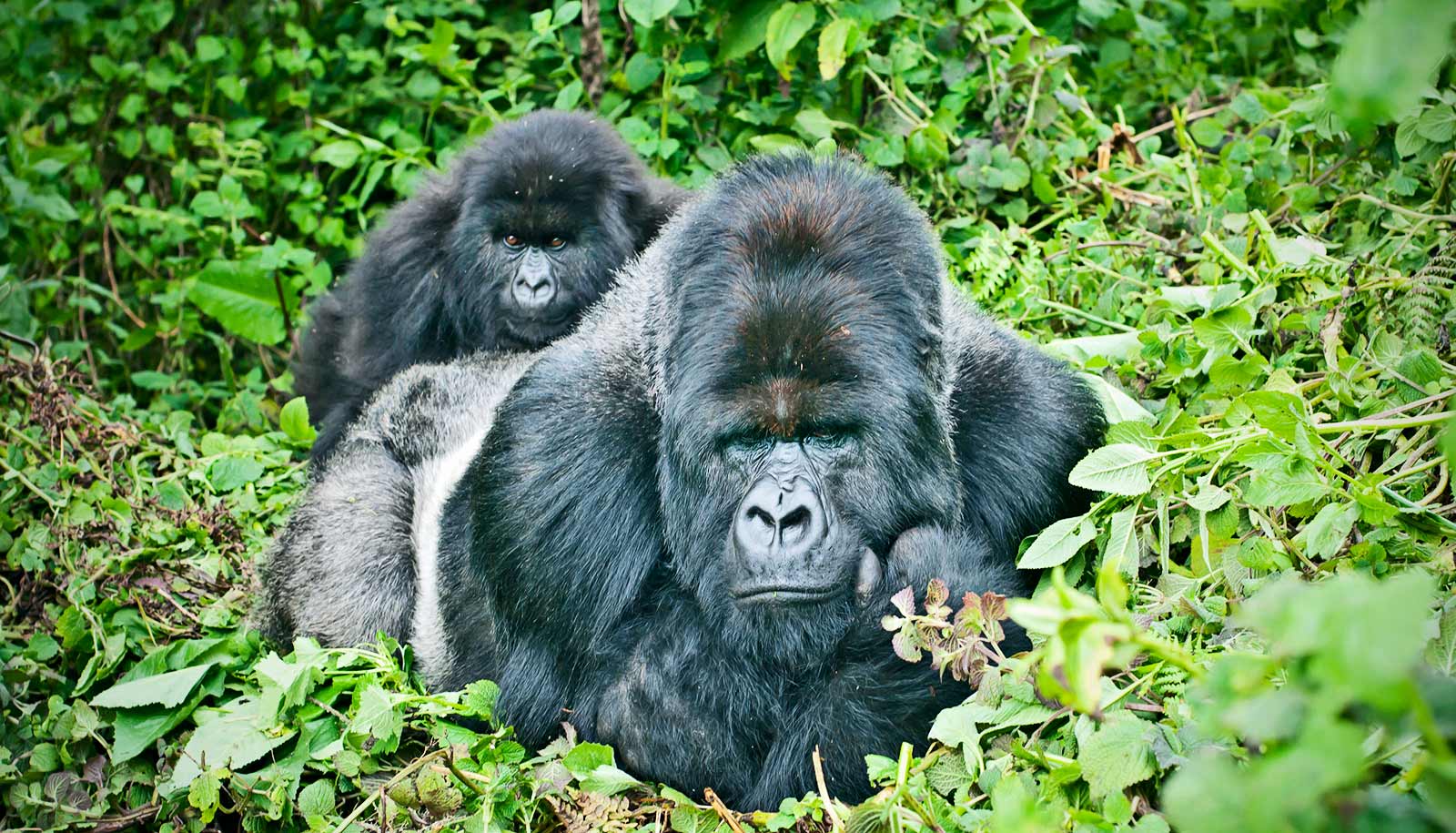Male gorillas have greater reproduction success if they spend more time taking care of kids—and not necessarily only their own.
In a previous study, the researchers found that wild male mountain gorillas living in Rwanda do something that is quite unusual for a mammal—they help take care of all of the kids that live in their social group, regardless of whether they are the father. The researchers wanted to find out why.
“Mountain gorillas and humans are the only great apes in which males regularly develop strong social bonds with kids, so learning about what mountain gorillas do and why helps us understand how human males may have started down the path to our more involved form of fatherhood,” says Stacy Rosenbaum, a postdoctoral fellow in anthropology at Northwestern University.
Mate appeal
The findings, which appear in Scientific Reports, run counter to how we typically think of male mountain gorillas—huge, competitive, and with reproduction in the group dominated by a single alpha male, says coauthor Christopher Kuzawa, professor of anthropology and a faculty fellow at Northwestern’s Institute for Policy Research.
“Males are spending a lot of time with groups of kids—and those who groom and rest more with them end up having more reproductive opportunities,” Kuzawa says. “One likely interpretation is that females are choosing to mate with males based upon these interactions.”
“We’ve known for a long time that male mountain gorillas compete with one another to gain access to females and mating opportunities, but these new data suggest that they may have a more diverse strategy,” Rosenbaum adds. “Even after multiple controls for dominance ranks, age, and the number of reproductive chances they get, males who have these bonds with kids are much more successful.”
The findings suggest an alternative route by which fathering behaviors might have evolved in our own species, Rosenbaum says.
Who’s taking care of the kids?
“We traditionally have believed that male caretaking is reliant on a specific social structure, monogamy, because it helps ensure that males are taking care of their own kids. Our data suggest that there is an alternative pathway by which evolution can generate this behavior, even when males may not know who their offspring are.”
This raises the possibility that similar behaviors could have been important in the initial establishment of fathering behaviors in distant human ancestors.
The researchers are currently investigating whether hormones might play a role in helping facilitate these male behaviors, as they do in humans. Researchers have conducted work on the hormonal changes that men experience as they become fathers and care for kids.
“In human males, testosterone declines as men become fathers, and this is believed to help focus their attention on the needs of the newborn,” says Kuzawa, who coauthored a study on the topic in the Proceedings of the National Academy of Sciences in 2011.
“Might gorillas that are particularly engaged in infant interaction experience similar declines in testosterone? Because this would probably impede their ability to compete with other males, evidence that testosterone goes down would be a clear indication that they must be gaining some real benefit—such as attracting mates,” Kuzawa says.
“Alternatively, if it does not go down, this suggests that high testosterone and caretaking behavior don’t have to be mutually exclusive in mountain gorillas.”
Testosterone and babies
The researchers look forward to exploring these new questions. “We’re working on characterizing these males’ hormone profiles across time, to see if events such as the birth of new infants might be related to their testosterone levels,” Rosenbaum says. “We’re fortunate to have data that span many years of their lives.”
Such work highlights the critical importance of long-term research studies, says senior author, Tara Stoinski of the Dian Fossey Gorilla Fund.
“Dian Fossey first went to study these mountain gorillas in the 1960s hoping to further our understanding of human evolution. More than 50 years later, the continued research on this population is still providing insights, not only on a critically endangered species, but also into what it means to be human.”
Additional coauthors are from the Max Planck Institute for Evolutionary Anthropology.
Source: Northwestern University

